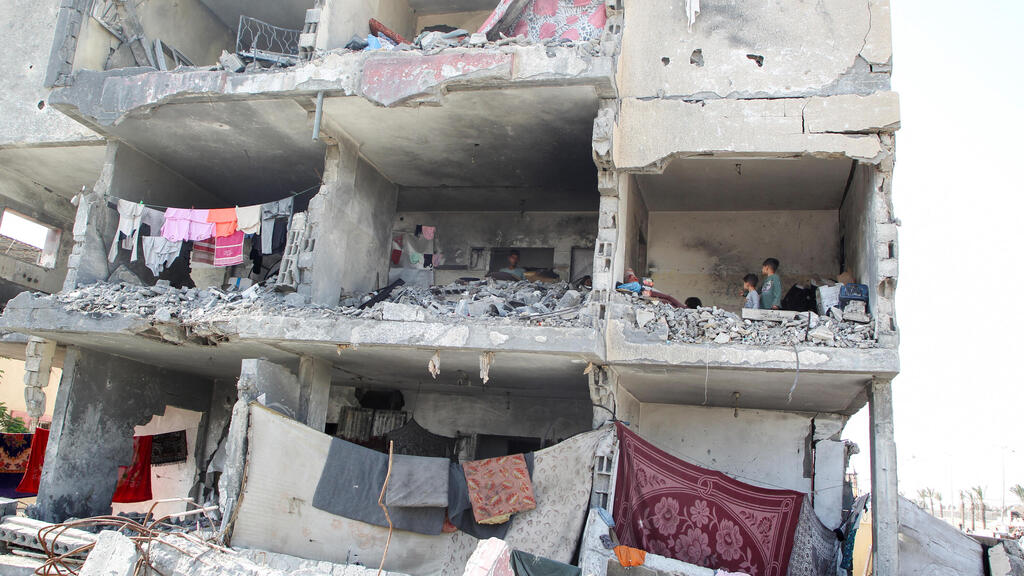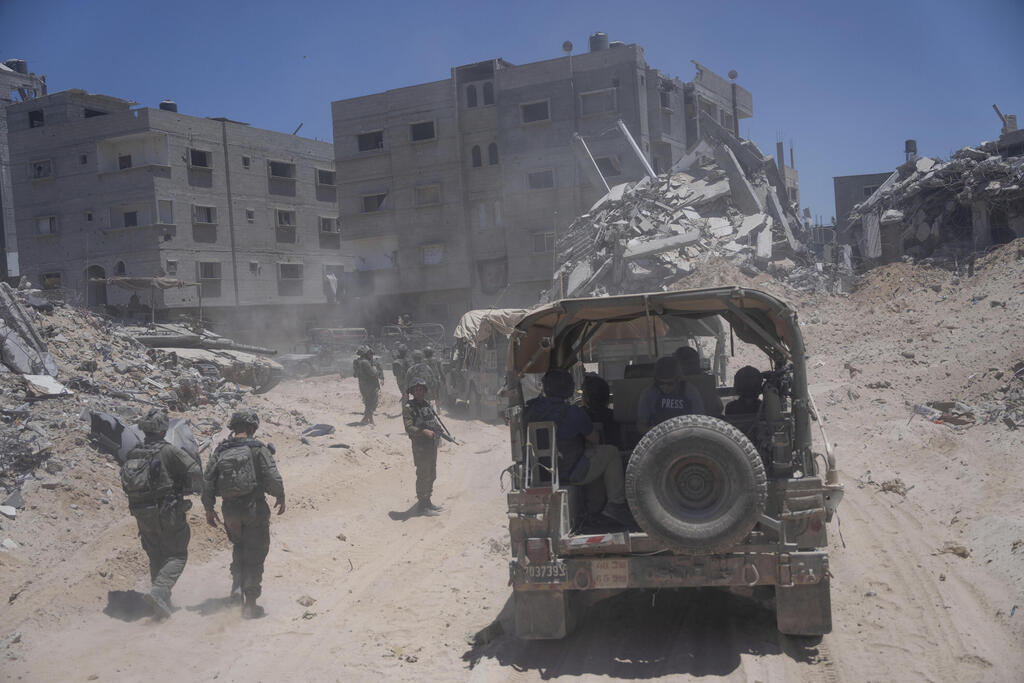For the first time since the onset of the war, foreign media teams were granted access to Rafah on Sunday, escorted by IDF spokesperson Daniel Hagari. CNN correspondent Jeremy Diamond described seeing a "startling" amount of destruction.
"Israel has repeatedly described its ground operation in Rafah as 'limited.' But in this neighborhood in southern Rafah, the destruction looks almost identical to what I’ve seen in northern Gaza, in central Gaza and in Khan Younis," Diamond reported, adding that the neighborhoods he visited were unrecognizable.
Hagari attributed the destruction to Hamas’ practice of attaching explosive devices to homes, apartment blocks and tunnels. "When you see destruction, it’s because either the houses were booby-trapped, or when we demolished a tunnel the houses fell apart, or that Hamas fired from those houses and risked our forces and we had no other method but to ensure our forces were safe," he explained.
CNN noted that it could not independently verify Hagari's claims as reporters were barred from entering the Palestinian enclave independently.
Dov Leiber of the Wall Street Journal also highlighted the extensive damage. "Even the counterinsurgency phase of the fighting that the Israeli military considers lower-intensity has been highly destructive, leaving many neighborhoods in rubble. This weekend, Israel’s military said it continued to find tunnels and fight against squads of militants in Rafah," Leiber wrote.
"Building after building had been reduced to piles of rubble. The military, which controlled the itinerary, said Hamas’ extensive use of booby traps made it safer for soldiers to bring the buildings down than to clear them."
The New York Times reported that once bustling streets were now deserted. "More than a million people have fled to avoid an Israeli onslaught that began two months ago. Many have been displaced repeatedly and now live in tent cities that stretch for miles, where they face an uncertain future as they mourn the loss of loved ones," wrote reporter Adam Goldman.
Goldman remarked that the military supervised their visit to Rafah, requiring them to stay with the convoy, although Israeli officials did not review or censor their work. "A representative of Hamas did not respond to text messages seeking comment," he noted.
At the end of the tour, the group climbed a hill overlooking the area. Hagari pointed toward Tal al-Sultan, another Rafah neighborhood, stating that hostages were being held there. "A small group of Americans could be among them. Freeing them required rescue operations or military pressure. Hagari said any country would have done the same as Israel after October 7," Goldman reported.




